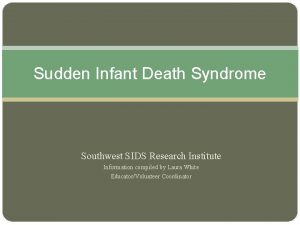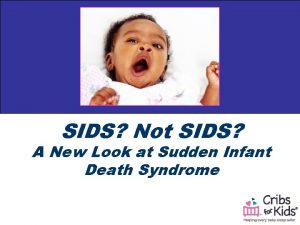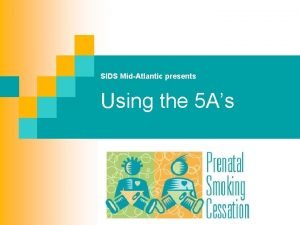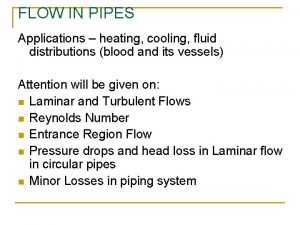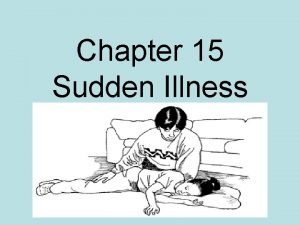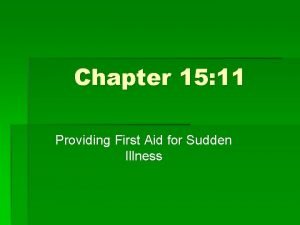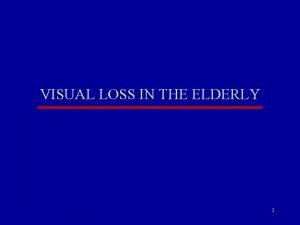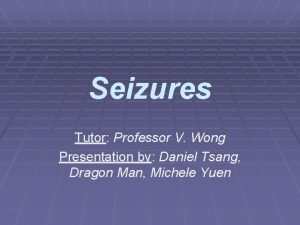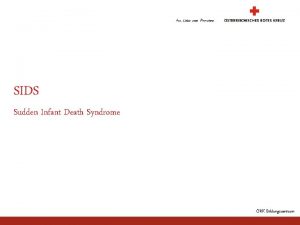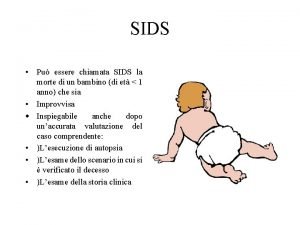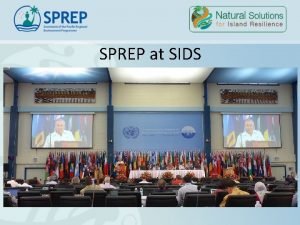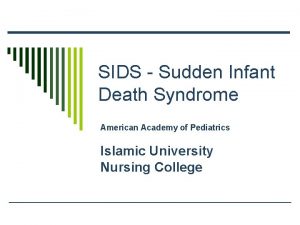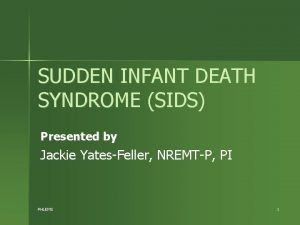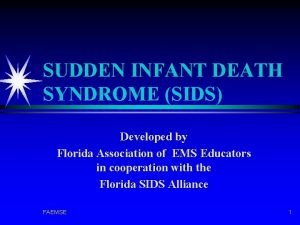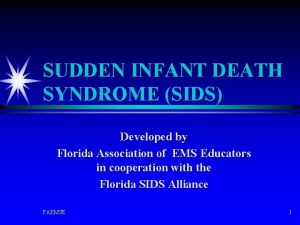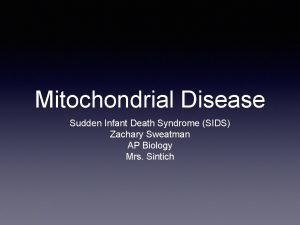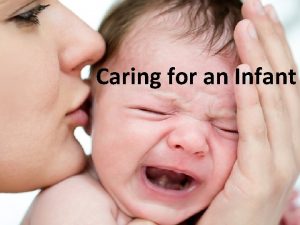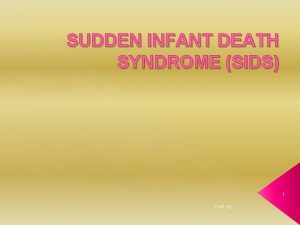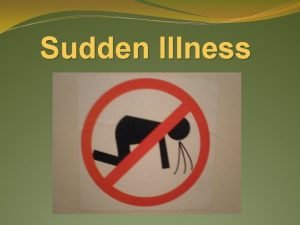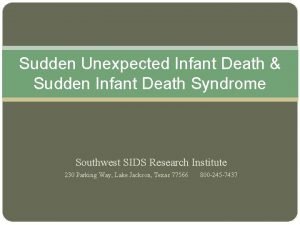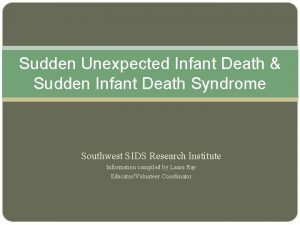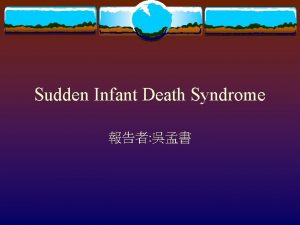SIDS Not SIDS A New Look at Sudden























- Slides: 23

SIDS? Not SIDS? A New Look at Sudden Infant Death Syndrome

Explanation of Concepts and Definitions • Sleep Position: There are generally three positions in which babies sleep: 1) supine, i. e. on the back, 2) prone, i. e. on the stomach, and 3) on the side. The supine sleep position is promoted by AAP and the Cribs for Kids Campaign. • Sleep Surface: The surface on which a baby is placed for sleep constitutes a sleep surface. Ideally, infants should sleep in a crib on a firm mattress that meets current federal safety standards. • Soft Bedding: This can include any type of bedding other than a firm, tightfitting mattress in a crib that meets current safety standards. Examples include: pillows, quilts, comforters, sheepskins, stuffed toys, blankets, waterbeds, soft mattresses, sofas, and other soft products.

Explanation of Concepts and Definitions • Bedsharing: When an infant sleeps with others in an adult bed. • Co-sleeping: Involves the infant sleeping in its own space, such as in a safety-approved crib, but adjacent to the parent or caregiver. • Roomsharing: When the baby sleeps in its own crib in the same room as the parents. • Safe Sleep Environment: This involves a combination of proper sleep position (supine) on a firm mattress, in a safety-approved crib, with no soft bedding or blankets in the crib, in a smokefree environment.

Sudden Infant Death Syndrome ICD-9 Definition The sudden death of an infant under one year of age which remains unexplained after the performance of a complete post-mortem investigation including: • autopsy • examination of the scene of death • review of the case history

SUID: Sudden Unexpected Infant Death The umbrella under which falls: • Sudden Infant Death Syndrome • Accidental Suffocation • Entrapment • Asphyxia • Neglect • Homicide • Hypothermia/hyperthermia • Metabolic disorders • Unknown Can be explained or unexplained; natural/undetermined

FACT! The overwhelming majority of babies who die from SUID/SIDS are discovered in an unacceptable sleep position or sleep location!

Bedsharing and Infant Death • FACT: Half of the infants in the U. S. who die from sudden unexpected death do so while sleeping with their parents – Bedsharing and infant death is very different in the U. S. than it is in other cultures – If babies routinely sleep with their parents in other cultures, they: • Use a firm mat on the floor • Have a separate mat for the infant • Do not use soft bedding

Triple Risk Model to Explain SIDS First 6 months HIGHEST RISK FOR SIDS Critical period of development Underlying Vulnerability Possible Brainstem Abnormality (Filiano and Kinney, modified) Prone/Side Sleep Position Nicotine Exposure Modifiable Pre- and Post-Natal Environmental Stressors Soft Bedding Overheating Bed sharing

Anatomy and Physiology Trachea Esophagus In the supine position, the trachea lies on top of the esophagus. Anything regurgitated or refluxed from the esophagus has to go against gravity to be aspirated into the trachea. Trachea Permission to use figure granted by First Candle/SIDS Alliance.

Babies at Risk • African American babies (2 x greater risk) • Mothers who smoke during pregnancy (3 x greater risk) • Babies who breathe secondhand smoke (2. 5 x greater risk) • Babies who sleep on their tummies (5 x greater risk) • Babies put on their tummies to sleep who usually sleep on their backs (18 -20 x greater risk) • Babies who sleep with parent(s) in adult bed (40 x greater risk)

Bed Sharing with Siblings, Soft Bedding Increase SIDS Risk − Chicago Infant Mortality Study, Pediatrics, May, 2003 • Sleeping on soft bedding: increased SIDS risk 5 times • Sleeping on the stomach: increased SIDS risk 5 times • SIDS victims were 5. 4 times more likely to have shared a bed with other children. • Sleeping on the stomach on soft bedding: increased risk of SIDS 21 times

SIDS is NOT Suffocation Although SIDS is different from suffocation, all the measures we use for SIDS risk reduction also help to prevent accidental deaths such as positional asphyxia, overlay, and entrapment. These are 100% PREVENTABLE deaths!

Unsafe Sleep Environment: Soft Bedding

Unsafe Sleep Environment

What is wrong with this picture?

What is wrong with these pictures? Jennifer Lopez’s nursery

Unsafe Sleep Environment

Back to Sleep Timeline April 15, 1992 The American Academy of Pediatrics recommended that healthy infants: “when being put down for sleep, be positioned on their back or side. ” December 1996 A revised statement by the AAP stated: “Back is best. ” November 1998 Cribs for Kids® begins in Pittsburgh, PA. October 2005 AAP recommends: “Separate but proximate sleeping environment. ” October 2011 AAP Revised Recommendations Released

SIDS Death Rate and Sleep Position 1988 – 2003 (per 1000 Live Births)

NEW AAP POSITION STATEMENT OCTOBER 2011 • • • • Always place your baby on his or her back for every sleep time. Always use a firm sleep surface. Car seats and other sitting devices are not recommended for routine sleep. The baby should sleep in the same room as the parents, but not in the same bed (room-sharing without bed-sharing). Keep soft objects or loose bedding out of the crib. This includes pillows, blankets, and bumper pads. Wedges and positioners should not be used. Pregnant woman should receive regular prenatal care. Don’t smoke during pregnancy or after birth. Breastfeeding is recommended. Offer a pacifier at nap time and bedtime. Avoid covering the infant’s head or overheating. Do not use home monitors or commercial devices marketed to reduce the risk of SIDS. Infants should receive all recommended vaccinations. Supervised, awake tummy time is recommended daily to facilitate development and minimize the occurrence of positional plagiocephaly (flat heads).

Additions to AAP Position Statement OCTOBER 2011 • Breastfeeding is recommended and is associated with a reduced risk of SIDS. • Infants should be immunized. Evidence suggests that immunization reduces the risk of SIDS by 50 percent. • Bumper pads should not be used in cribs. There is no evidence that bumper pads prevent injuries, and there is a potential risk of suffocation, strangulation or entrapment.

Safe-Sleep Survival Kit $74. 99

Contact Information Regina Washington REMSA/Safe Kids Washoe County 450 Edison Way Reno, NV 89502 Office - (775) 858 -5700, ext. 3139 Fax – (775) 858 -5735 Email – rwashington@remsa-cf. com Website – www. safekidswc. com
 Look up look down look left look right
Look up look down look left look right Triple risk model sids
Triple risk model sids Triple risk model sids
Triple risk model sids Triple risk model sids
Triple risk model sids Sids mid atlantic
Sids mid atlantic Sadlier unit 1 level d synonyms
Sadlier unit 1 level d synonyms Activity 1 look at the picture
Activity 1 look at the picture Activity 1 looking back
Activity 1 looking back Activity 1 a look at the picture
Activity 1 a look at the picture Sudden successive flights of bullets
Sudden successive flights of bullets Sudden oak death map
Sudden oak death map Gradual contraction loss coefficient
Gradual contraction loss coefficient Inward projecting pipe entrance
Inward projecting pipe entrance Chapter 17:4 providing first aid for shock
Chapter 17:4 providing first aid for shock Sudden illness examples
Sudden illness examples Unit 15:11 providing first aid for sudden illness
Unit 15:11 providing first aid for sudden illness The valve closure in a pipe is said to be gradual when
The valve closure in a pipe is said to be gradual when The sudden release of energy stored in rocks causes a(n)
The sudden release of energy stored in rocks causes a(n) Sudden fiction meaning
Sudden fiction meaning Yas 35 dante gibi
Yas 35 dante gibi Sudden painless loss of vision
Sudden painless loss of vision Sudden painless loss of vision
Sudden painless loss of vision Sudden attack projetista
Sudden attack projetista The broken wall the burning roof and tower
The broken wall the burning roof and tower


